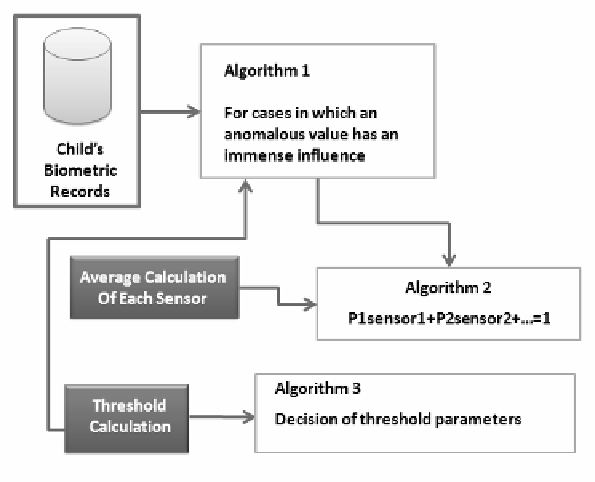Information Technology Reference
In-Depth Information
It is important to adjust the weight given to each sensor, because the emergence of
a new anomalous value when associated with values, which are typically anomalous
may suggest an even more dangerous situation. To evaluate if some value is normally
out of the expected standard range it is necessary to consult all the records of data-
base. Once applied the self-learning algorithm, the result of the calculated average
will determine if the dangerous situation of the child is a situation of fear or illness.
Detected the state of danger, the system must send an alert notifying the danger to
the indicated entity.
This device will also have an GPS sensor to collect, whenever it is necessary, the
location of the child and send it to a web application that can only be accessed by
child's care holders.
3.3
Self-learning Algorithm
In this subsection will be explained the methodology applied to the self-learning algo-
rithm presented in Fig. 3. The algorithm consists in three stages.
Fig. 3.
Self-learning Algorithm Proposal
First it is necessary to achieve the correct value of threshold. This calculation con-
sists in verifying if the biometric data were anomalous a large number of times. If
true, the standard values must be modified to the average value of all samples col-
lected. Once defined the threshold values, they must be combined with all biometric
records. The second stage of this algorithm has the goal of identifying situations
where an anomalous value has a great influence on a dangerous situation. To find it,
first it is crucial to compare the new sample to the threshold previously defined. If the

Search WWH ::

Custom Search